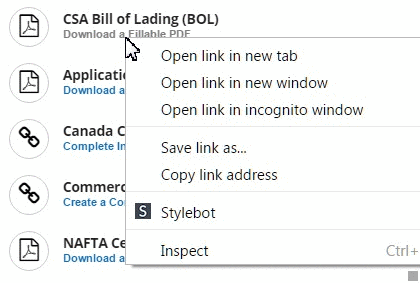The Entrance of E-commerce into B2B Supply Chains: Amazon Supply
As discussed in an earlier post, Google has entered the B2B supply segment-- but they weren’t the first. Today, we’re going to look at another internet giant, Amazon, whose Amazon Supply made a splash in April 2012, and has been continually raising eyebrows in the B2B supply chain industry.
Amazon’s version of the B2B shopping solution differs from Google’s in that they seem to want to control the entire fulfillment process using the familiar “shopping cart” process. To test the service we added to our shopping cart a Stainless Steel Sandwich prep table, 304 lbs with dimensions nicely suited for shrink wrapping and shipping on a pallet via an LTL trucking logistics company. (48" Width x 42" Height x 30" Depth). To our surprise it qualified for free shipping! But, upon entering credit card detail and moving further through the checkout process the free shipping message was replaced with a shipping fee of $240, a significant increase over ‘free.’ Nuances like this are common when navigating this service and we will chalk it up to the “Beta” release status. Similarly we were able to add many other items to our shopping cart but could not get the system to carry through to the order fulfillment stage until these items were removed from the cart.
Savvy purchasers and distributors may not like the impersonal aspects of doing business on Amazon Supply, especially because (as explained above) it attempts to remove most of the levels of interaction and negotiation that are so common to B2B transactions. There is a true tangible benefit to being able to speak with the decision makers at your supplier company or your shipping company in a time of need (perhaps to make a rush order or while shipping freight between the US and Canada). Amazon supply may be suitable for some but will leave a lot to be desired for others.
There are a few things to consider as this service becomes more popular among purchasers and suppliers.
1. Price Visibility
Amazon Supply posts prices online for all to see. This means that a wholesale distribution company who supplies the same products may expect to face questions about their prices from even their most loyal customers. Personalized service and true account representation for customers will help give suppliers a leg up over Amazon’s current service.
2. Online Presence
Amazon shook up the book distribution industry early before customer facing websites took hold in the B2B space. Today great websites are every bit as important to independent wholesale distribution companies as they are to B2C companies. Companies not willing to invest in such a worthwhile endeavour may want to team up with Amazon Supply to manage the customer facing process for them, however, this gives Amazon access to your customers, product and pricing data, effectively removing your ability to bundle great personalized service with the products you distribute.
3. Value Added
The prospect of “free shipping” for a pallet of freight was too good to be true but perhaps the error in this beta test is an indication of what Amazon has planned. If their new supplier program can somehow offer free two-day shipping and a robust return policy to industrial shipments of palletized freight then everyone will be forced to take notice, suppliers, purchasers and logistics companies.
Amazon developed the model for charging low prices on fast moving items by implementing an easy to use online catalogue and controlling most of the fulfillment process. Will they now be able to bring similar aspects to the B2B industrial supply and fulfillment industry given that many products are slower moving, purchased in bulk, have longer sales processes and require much more specialized shipping services? It will be interesting to see what happens.





